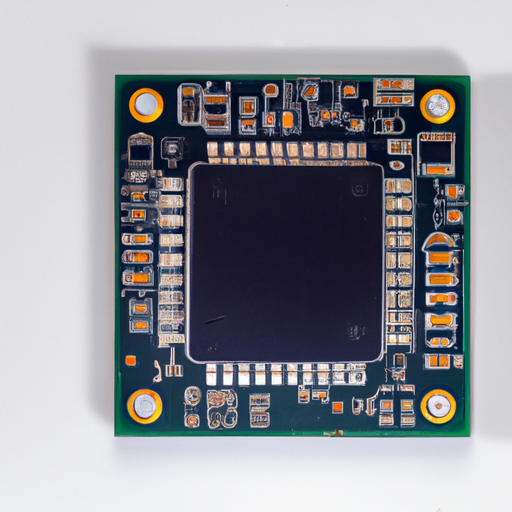

Integrated circuits (ICs) are essential components in modern electronic devices, serving as the brains that power everything from smartphones to computers to medical equipment. As technology continues to advance at a rapid pace, the demand for the latest IC devices is higher than ever. In order to keep up with this demand, it is important for manufacturers and consumers to understand the various purchasing models available for these components.

One of the most traditional purchasing models for IC device components is the direct purchase model. In this model, manufacturers purchase IC components directly from the supplier or distributor. This model offers the advantage of direct communication with the supplier, allowing for greater control over pricing, delivery schedules, and product quality. However, direct purchasing can also be time-consuming and costly, as manufacturers may need to maintain relationships with multiple suppliers in order to ensure a steady supply of components.
Another common purchasing model for IC device components is the distribution model. In this model, manufacturers purchase components from a third-party distributor, who acts as an intermediary between the manufacturer and the supplier. Distributors often have established relationships with multiple suppliers, allowing manufacturers to access a wide range of components without having to maintain individual relationships with each supplier. This can help manufacturers save time and money, as distributors can often negotiate better pricing and delivery terms on behalf of their customers.
One of the newest purchasing models for IC device components is the online marketplace model. In this model, manufacturers can purchase components directly from online marketplaces such as Digi-Key, Mouser, or Arrow Electronics. These marketplaces offer a wide selection of components from multiple suppliers, allowing manufacturers to easily compare prices and specifications before making a purchase. Online marketplaces also offer the convenience of 24/7 access to components, making it easier for manufacturers to quickly source the components they need.
In addition to these traditional purchasing models, there are also newer models emerging in the industry. One such model is the subscription-based model, where manufacturers pay a monthly fee to access a certain number of components from a supplier. This model can help manufacturers save money on upfront costs, as they only pay for the components they use. It can also help suppliers maintain a steady revenue stream, as manufacturers are locked into a subscription agreement for a certain period of time.
Overall, there are many purchasing models available for the latest IC device components, each with its own advantages and disadvantages. Manufacturers should carefully consider their specific needs and requirements when choosing a purchasing model, taking into account factors such as pricing, delivery schedules, and product quality. By understanding the various purchasing models available, manufacturers can ensure they are sourcing the best components for their devices at the most competitive prices.
Integrated circuits (ICs) are essential components in modern electronic devices, serving as the brains that power everything from smartphones to computers to medical equipment. As technology continues to advance at a rapid pace, the demand for the latest IC devices is higher than ever. In order to keep up with this demand, it is important for manufacturers and consumers to understand the various purchasing models available for these components.

One of the most traditional purchasing models for IC device components is the direct purchase model. In this model, manufacturers purchase IC components directly from the supplier or distributor. This model offers the advantage of direct communication with the supplier, allowing for greater control over pricing, delivery schedules, and product quality. However, direct purchasing can also be time-consuming and costly, as manufacturers may need to maintain relationships with multiple suppliers in order to ensure a steady supply of components.
Another common purchasing model for IC device components is the distribution model. In this model, manufacturers purchase components from a third-party distributor, who acts as an intermediary between the manufacturer and the supplier. Distributors often have established relationships with multiple suppliers, allowing manufacturers to access a wide range of components without having to maintain individual relationships with each supplier. This can help manufacturers save time and money, as distributors can often negotiate better pricing and delivery terms on behalf of their customers.
One of the newest purchasing models for IC device components is the online marketplace model. In this model, manufacturers can purchase components directly from online marketplaces such as Digi-Key, Mouser, or Arrow Electronics. These marketplaces offer a wide selection of components from multiple suppliers, allowing manufacturers to easily compare prices and specifications before making a purchase. Online marketplaces also offer the convenience of 24/7 access to components, making it easier for manufacturers to quickly source the components they need.
In addition to these traditional purchasing models, there are also newer models emerging in the industry. One such model is the subscription-based model, where manufacturers pay a monthly fee to access a certain number of components from a supplier. This model can help manufacturers save money on upfront costs, as they only pay for the components they use. It can also help suppliers maintain a steady revenue stream, as manufacturers are locked into a subscription agreement for a certain period of time.
Overall, there are many purchasing models available for the latest IC device components, each with its own advantages and disadvantages. Manufacturers should carefully consider their specific needs and requirements when choosing a purchasing model, taking into account factors such as pricing, delivery schedules, and product quality. By understanding the various purchasing models available, manufacturers can ensure they are sourcing the best components for their devices at the most competitive prices.